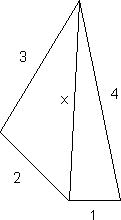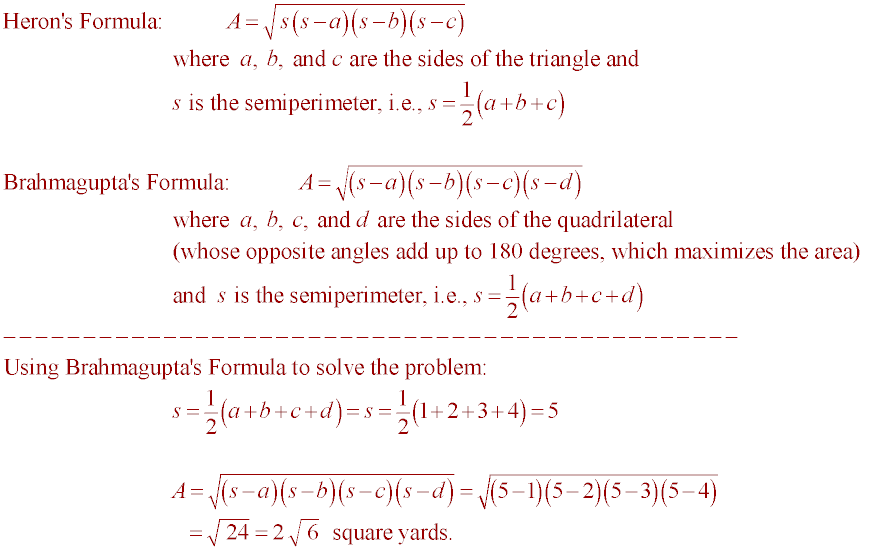A farmer has four straight pieces of fencing: 1, 2, 3, and 4 yards in length.
What is the maximum area he can enclose by connecting the pieces?Assume the land is flat.
Solution to the Problem:

Given a quadrilateral with sides 1,2,3,4, we have three non-congruent forms:
1,2,3,4 = 1,4,3,2;
1,2,4,3 = 1,3,4,2;
1,3,2,4 = 1,4,2,3.
However, if we are interested only in areas, the three forms are equivalent.
This is because each form can be generated from another by joining opposite
vertices and flipping one triangle.
-
I would hope that my calculus students would look at this as a maximum/minimum problem
and set up an equation for the area and then differentiate and set equal to zero.
In the diagram below, let x = the length of the diagonal. You can find the area of the quadrilateral by finding the area of the two triangles using Heron's Formula (below). You will then have an equation for the area in terms of one variable (x). - For my C++ students, I would hope that you would use Brahmagupta's formula (below). This finds the area of a quadrilateral (the version below is for a quadrilateral whose opposite angles add up to 180 degrees).


Correctly solved by:
| 1. John Funk | Ventura, California |
| 2. Walt Arrison | Philadelphia, Pennsylvania |
| 3. David & Judy Dixon | Bennettsville, South Carolina |
| 4. Arsalan Heydarian | Harrisonburg, Virginia |
| 5. Cameron S. | Columbus, Georgia |
| 6. James Simmons | Harrisonburg, Virginia |
| 7. Derick Gilkeson | Harrisonburg, Virginia |
| 8. Wajih Ansari | Harrisonburg, Virginia |
| 9. Jason Krech | Harrisonburg, Virginia |
| 10. António Baptista | Lisboa, Portugal |
| 11. Hannah Thomas | Columbus, Georgia |
| 12. Jeffrey Gaither | Winchester, Virginia |